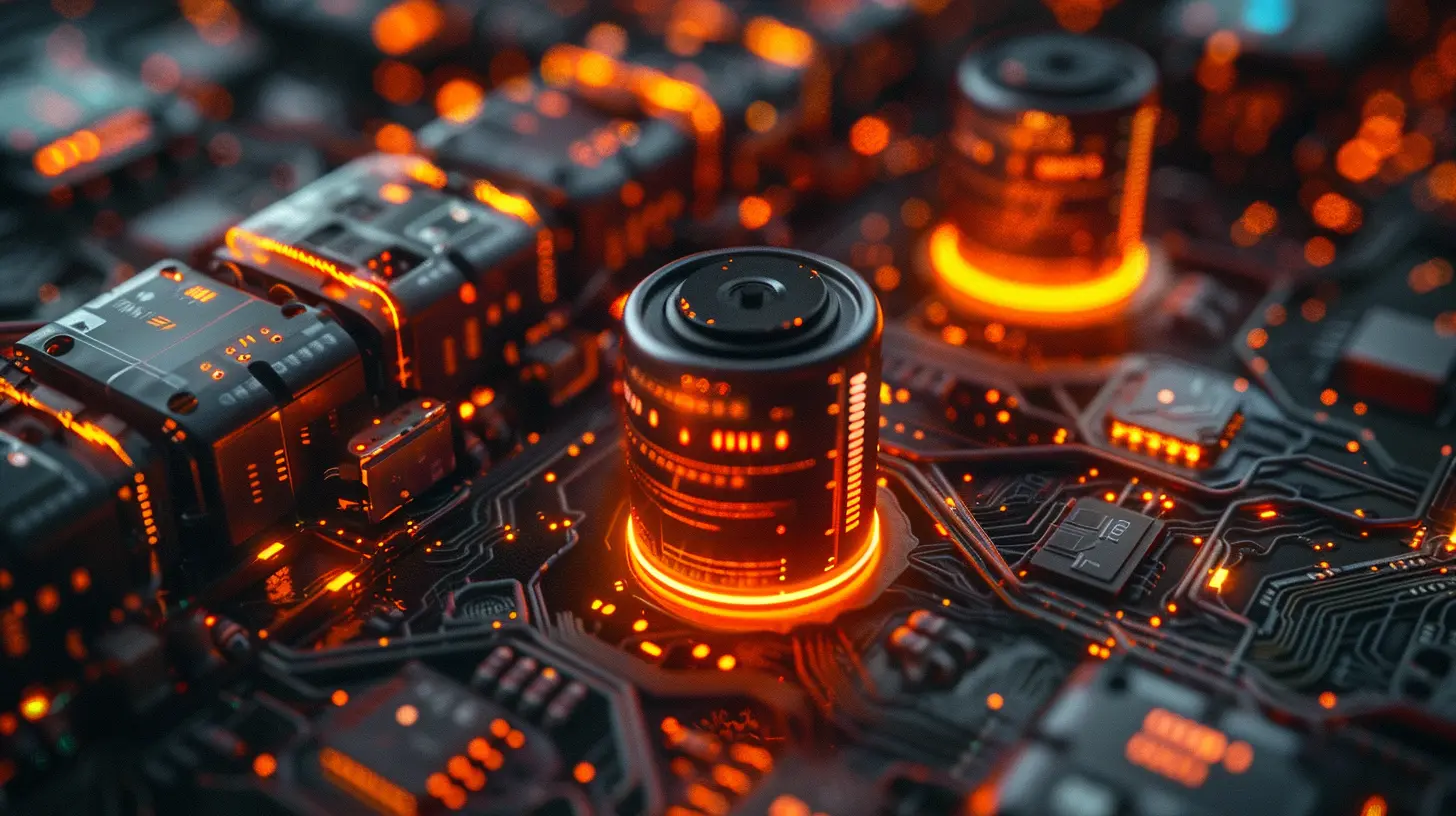The Evolution of Battery Technology in Consumer Electronics
8 August 2025
Batteries—those little powerhouses—are the unsung heroes of modern life. From smartphones and laptops to electric vehicles and smartwatches, we rely on them to keep our devices running. But have you ever stopped to think about how far battery technology has come? It wasn’t always about lithium-ion and fast-charging.
Let’s take a journey through the evolution of battery technology in consumer electronics, from the bulky energy sources of the past to the cutting-edge innovations shaping the future.

The Early Days: When Bigger Meant Better
Batteries have been around for centuries, but early consumer electronics didn’t exactly have the sleek, lightweight power sources we’re used to today. The first commercially available batteries—think lead-acid and nickel-cadmium—were bulky, heavy, and not very efficient.1. Lead-Acid Batteries: The Ancestor of Rechargeable Power
Invented in 1859, lead-acid batteries were among the first rechargeable battery types. While they still power cars today, they were once used in early consumer electronics like radios and backup power supplies. The problem? They were massive, slow to charge, and not practical for handheld devices.2. Nickel-Cadmium (NiCd): A Step Toward Portability
In the 1940s, nickel-cadmium (NiCd) batteries made their way into consumer electronics. They were rechargeable and more compact than lead-acid batteries, making them ideal for early portable devices like cordless phones and power tools. However, NiCd batteries suffered from the “memory effect,” meaning they lost capacity if not fully discharged before recharging—an annoying flaw that users had to work around.
The Rise of More Efficient Batteries
As technology advanced, so did the need for better batteries. Consumers wanted smaller, longer-lasting, and faster-charging power sources to support the rise of handheld electronics.3. Nickel-Metal Hydride (NiMH): The Bridge to Modern Batteries
The 1980s and 1990s saw the rise of Nickel-Metal Hydride (NiMH) batteries. These improved upon NiCd batteries by offering higher energy density and reducing the memory effect issue. They became popular in rechargeable AA and AAA batteries, as well as early mobile phones and camcorders.Even though NiMH was a step forward, it still had drawbacks—primarily a lower lifespan and slower charging compared to what was about to come next.

The Lithium-Ion Revolution
Then came the game-changer: lithium-ion (Li-ion) batteries. This technology completely transformed consumer electronics, making smartphones, laptops, and wearables possible.4. Lithium-Ion (Li-Ion): Small, Powerful, and Game-Changing
Li-ion batteries, which became commercially viable in the 1990s, offered higher energy density, meaning more power in a compact size. Unlike their predecessors, Li-ion batteries didn’t suffer from the memory effect and were much lighter.These batteries became the standard for almost everything—laptops, smartphones, tablets, and even electric vehicles. They also introduced fast-charging capabilities, making them even more convenient for everyday use.
5. Lithium-Polymer (Li-Po): An Even Lighter Alternative
Looking for even slimmer batteries? Lithium-polymer (Li-Po) batteries entered the scene, offering flexibility in design. They’re commonly found in ultra-thin smartphones, drones, and fitness trackers because they can be shaped to fit smaller or irregular spaces.Li-Po batteries are slightly more expensive than traditional Li-ion, but their lightweight and high-performance nature make them the battery of choice for cutting-edge gadgets.

The Present and Future: Smarter, Faster, and More Sustainable
While Li-ion and Li-Po batteries dominate today’s market, the push for even better energy storage hasn’t stopped. Researchers and tech companies are working on faster-charging, longer-lasting, and more eco-friendly power sources.6. Solid-State Batteries: The Next Big Thing?
Solid-state batteries promise a future with higher energy density, faster charging, and improved safety. Unlike Li-ion batteries, which contain liquid electrolytes, solid-state batteries use solid materials, reducing the risk of overheating and fires.Companies like Samsung, Toyota, and QuantumScape are investing heavily in solid-state battery technology. If perfected, these batteries could revolutionize everything from smartphones to electric vehicles, offering improved performance and a longer lifespan.
7. Graphene Batteries: Faster Charging and Incredible Longevity
Imagine charging your smartphone in just a few minutes. Graphene batteries could make that a reality. Known for their super-fast charging speeds and long lifespan, graphene-based batteries are seen as a potential next-generation solution.While still in the early stages of commercialization, some manufacturers have already begun incorporating graphene-enhanced battery technology into power banks and experimental devices.
8. Bio-Batteries & Sustainable Alternatives
With environmental concerns growing, researchers are exploring bio-batteries and eco-friendly alternatives that rely on organic compounds to generate power. These could eventually replace traditional batteries, reducing electronic waste and making energy storage more sustainable.Challenges in Battery Technology
Despite all these advancements, battery technology still faces challenges.1. Longevity – Over time, batteries degrade, leading to reduced capacity.
2. Charging Speed – While fast charging is improving, it can still lead to overheating and battery wear.
3. Environmental Impact – Battery production relies on finite resources like lithium and cobalt, raising concerns about sustainability.
What’s Next for Battery Tech?
We’re heading toward a future where batteries are not only smaller and more powerful but also more environmentally friendly. Imagine a world where your smartphone battery lasts weeks instead of days, your electric car charges in minutes instead of hours, and your wearable devices never run out of power.With advances in solid-state, graphene, and bio-batteries, that future may be just around the corner.
Final Thoughts
Battery technology has come a long way, and it’s only getting better. From lead-acid giants to ultra-thin lithium-polymer cells, our need for smaller, more powerful, and longer-lasting batteries continues to push innovation forward.The next big breakthrough? It’s only a matter of time. And who knows? In a few years, we might be talking about batteries that charge in seconds or even devices that power themselves without a battery at all.
What do you think the future of batteries will look like? Let’s discuss in the comments!
all images in this post were generated using AI tools
Category:
Battery TechnologyAuthor:

John Peterson
Discussion
rate this article
1 comments
Ximena McKinnon
Battery technology's evolution mirrors our growing demand for efficiency and sustainability in consumer electronics. Innovations like solid-state and fast-charging solutions are reshaping our interaction with devices.
August 15, 2025 at 11:00 AM

John Peterson
Thank you for your insightful comment! It's exciting to see how advancements in battery technology are indeed transforming consumer electronics towards greater efficiency and sustainability.


